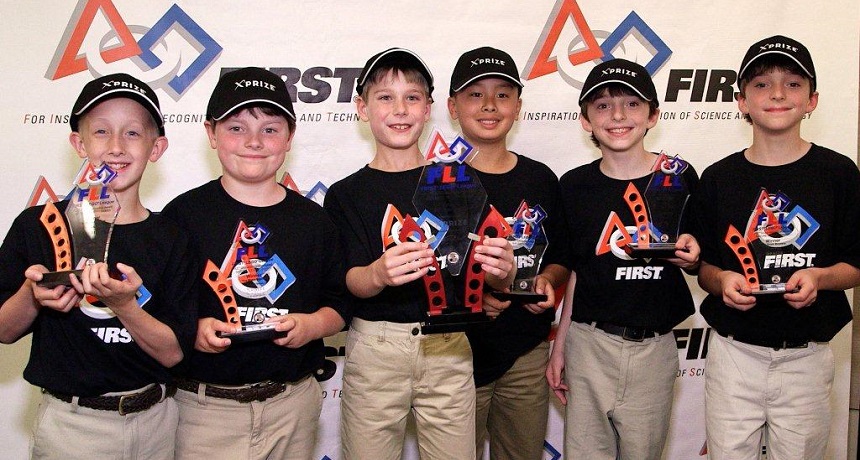Kid inventors win big with a sign in the sky
The Brain Busters, from Sherborn, Mass., invented a high-flying sign to post alerts during a natural disaster

Massachusetts students won $20,000 for their creative invention: a bulletin-carrying balloon to send alerts during a prolonged power blackout.
FIRST LEGO League
Share this:
- Share via email (Opens in new window) Email
- Click to share on Facebook (Opens in new window) Facebook
- Click to share on X (Opens in new window) X
- Click to share on Pinterest (Opens in new window) Pinterest
- Click to share on Reddit (Opens in new window) Reddit
- Share to Google Classroom (Opens in new window) Google Classroom
- Click to print (Opens in new window) Print
If you could invent something to help people in a natural disaster, what would it be? If you’re a team of six kids from Sherborn, Mass., you’d create a sign that people could see from almost anywhere in their neighborhood, just by looking into the sky. Carried by a balloon, this high-flying notification board can post important alerts so that people in areas without power can still get much-needed information.
The Sherborn team, which calls itself Brain Busters, won the FIRST LEGO League Global Innovation Award Contest in Alexandria, Va. (FIRST is an acronym made by the first letters of For Inspiration and Recognition of Science and Technology.) On June 3, the developers — Ryan Bendremer, 9; Dillon Natale, 9; Zachary Szeto, 10; Sam Randa, 10; Nate Randa, 10; and Owen Bingham, 10 — took home a $20,000 cash prize. That should help get their invention ready to sell.
Their winning concept may not involve any LEGOs, but it met the program’s mission. All had been asked to provide a simple solution to a difficult problem.
In a blizzard, earthquake or fire, people might lose electricity. Without electricity, phones run out of power, plug-in radios won’t work and no one can get on the Internet. So when the power goes out, people might not be able to learn where to turn for shelter, water or food.
With the Brain Busters’ solution, people can look to the sky. The team designed a 1.5 meter (five foot) wide balloon that can float 30 meters (100 feet) above the ground. Dangling from the balloon is a heavy cloth sign 1.5 meters across. It becomes a high-flying alert. The sign doesn’t need any power, so it’s perfect for a blackout. Sandy Bendremer, who coached the Brain Busters team, says the aerial sign is visible 0.8 kilometers (half a mile) away.
The kids built a full-scale model of their balloon-alert system and showed that it works even in bad weather. In a video on their website, the team reports that emergency management officials in Massachusetts were so impressed by the balloon-hoisted sign that they are planning to try it out.
The kids’ invention beat out more than 500 others. The contest had asked teams of up to 10 to solve problems faced by people around the world. Anyone between the ages of 9 and 16 could take part. Other finalists developed lighted roads to help people evacuate from a tsunami and a board game that teaches players what to do if a tornado is nearby.
The second FIRST LEGO League challenge begins in August. Interested participants can sign up now. Parents organize the teams and register their team members to participate in a three-part contest. During the school year, teams get to build a working robot with LEGO Mindstorms computer software and parts. They also design and build inventions like that big balloon sign. The FIRST LEGO League challenge emphasizes the core values of working as a team, independent ideas and learning along the way. If a team does well, its invention could be the next bring home a $20,000 prize.
Follow Eureka! Lab on Twitter
Power Words
earthquake A sudden and sometimes violent shaking of the ground, sometimes causing great destruction, as a result of movements within Earth’s crust or of volcanic action.
natural disaster A major event caused by Earth’s natural processes, such as earthquakes, tsunamis or hurricanes. Natural disasters can hurt or kill many people, and severely affect their lives.
software The mathematical instructions that direct a computer’s hardware, including its processor, to perform certain operations.
tornado A violently rotating column of air extending from the ground to a thunderstorm above.
tsunami One or many long, high sea waves caused by an earthquake, submarine landslide or other disturbance.